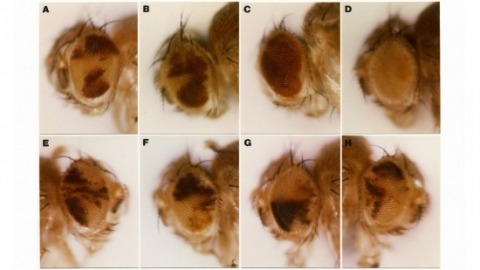Filter
Publication Date
Type of Publication
- Remove Non-Janelia filter Non-Janelia
4 Publications
Showing 1-4 of 4 resultsThe problems of finding a longest common subsequence of two sequences A and B and a shortest edit script for transforming A into B have long been known to be dual problems. In this paper, they are shown to be equivalent to finding a shortest/longest path in an edit graph. Using this perspective, a simple O(ND) time and space algorithm is developed where N is the sum of the lengths of A and B and D is the size of the minimum edit script for A and B. The algorithm performs well when differences are small (sequences are similar) and is consequently fast in typical applications. The algorithm is shown to have O(N +D expected-time performance under a basic stochastic model. A refinement of the algorithm requires only O(N) space, and the use of suffix trees leads to an O(NlgN +D ) time variation.
DNA primase isolated from human mitochondria sediments in glycerol density gradients at 30S and 70S. These unusually high sedimentation coefficients are a result of association of the primase activity with RNA. Treatment of primase with nuclease not only affects its sedimentation behavior, but also inactivates the primase activity. The major RNA species that cofractionates with primase activity is shown by direct sequence analysis to be cytosolic 5.8S ribosomal RNA (rRNA). Specific degradation of endogenous 5.8S rRNA using ribonuclease H and oligonucleotides complementary to 5.8S rRNA results in reduction of primase activity. Other small RNAs may play a structural role in the formation of an active DNA primase complex.
We show that the germline specificity of P element transposition is controlled at the level of mRNA splicing and not at the level of transcription. In the major P element RNA transcript, isolated from somatic cells, the first three open reading frames are joined by the removal of two introns. Using in vitro mutagenesis and genetic analysis we demonstrate the existence of a third intron whose removal is required for transposase production. We propose that this intron is only removed in the germline and that its removal is the sole basis for the germline restriction of P element transposition.
By discrete manipulation of the endocrine cues that control insect metamorphosis, it has been possible to examine the mechanisms governing the growth of neural processes during development. During the transition from larva to pupa in the hawkmoth, Manduca sexta, identified sensory neurons reorganize their central projections to evoke a new behavior–the gintrap reflex. Topical application of a juvenile hormone analog to the peripheral cell bodies of these sensory neurons during a critical period of development caused them to retain their larval commitment rather than undergo pupal development with the rest of the animal. The sensory neurons retained the larval arborization pattern within the pupal CNS and were unable to evoke the gin-trap reflex. Thus, the hormonal environment of the cell body is critical for controlling growth and synapse formation by distant axonal processes.

